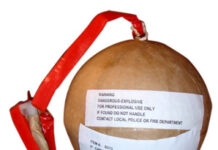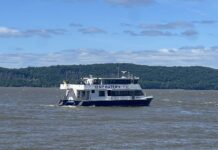In industries where physical labor is part of the daily grind—construction, farming, mechanics, or warehouse work—the right clothing isn’t just about appearance. It’s about function, safety, and performance. Quality workwear plays a critical role in how well someone performs on the job, how safe they stay, and how confident they feel from start to finish. From high-durability fabrics to smart design features that support movement and endurance, investing in proper workwear is an investment in productivity and well-being.
Whether you’re working outdoors in unpredictable weather or indoors in high-intensity environments, the clothes you wear are more than just uniform—they’re important tools. And just like any other tool, the right ones make the job easier, more efficient, and a lot more comfortable.
Built for the Work, Not Just the Look
Workwear should be more than stylish. It needs to hold up against daily wear and tear, offer comfort in motion, and fit in a way that doesn’t restrict the tasks at hand. This is especially important in jobs that involve bending, lifting, crawling, or climbing. Stiff seams, poor stitching, or overly tight fabric can become major issues when you’re constantly on the move.
Durability is key. Clothes that are made to handle repeated strain and friction will last longer and protect better. Reinforced knees, double-stitched seams, and heavy-duty fabrics all contribute to the lifespan of a garment—and, by extension, to your peace of mind.
And it’s not just about shirts and outerwear. Work pants must be up to the challenge. For tough tasks in unpredictable conditions, consider rugged jeans for men who need both resilience and flexibility. These jeans typically feature stronger fibers, reinforced pockets, and fits that allow a full range of motion—exactly what professionals need in dynamic job settings. Cotton duck, canvas, and denim blends are often favored for their strength and breathability. These materials resist tearing and abrasion yet still allow airflow to keep the wearer cool throughout the day. Choosing quality over trend-driven styles ensures you’re getting gear that won’t fail mid-task.
Safety Starts with What You Wear
In hazardous work environments, safety is paramount—and what you wear can directly affect your protection level. Quality workwear integrates safety features without compromising mobility. Flame-resistant (FR) clothing, high-visibility vests, waterproof layers, and steel-toe compatible pants are just a few examples of how gear is built to meet industry-specific safety needs.
In low-light or high-traffic areas, reflective striping and bright-colored fabrics can help prevent accidents. Waterproof or insulated outerwear protects against the elements, reducing the risk of cold stress or heat-related fatigue. And breathable, moisture-wicking layers help regulate body temperature—keeping workers dry, alert, and focused.
Proper fit enhances safety; Loose clothing can get caught in machinery, while overly tight garments restrict movement. Tailored workwear that allows for layering and ventilation strikes the right balance between comfort and caution.
Choosing certified workwear that meets national safety standards isn’t optional in many industries—it’s crucial. Quality manufacturers test their products rigorously to ensure they provide not just comfort but critical protection.
Productivity Increases When Comfort Meets Utility
Think about how distracting and uncomfortable clothes can be. Whether it’s a stiff collar, tight waistband, or constantly slipping waistband, discomfort on the job can quickly impact focus and productivity. Workwear designed with real-world feedback in mind helps eliminate these distractions.
Quality garments incorporate utility features that support everyday job tasks. Multiple tool pockets, hammer loops, knee pad inserts, and water-resistant coatings all add function without requiring extra gear. These practical touches minimize downtime and let you move more efficiently through the workday.
Confidence is a huge factor in workplace performance. When you’re dressed in clothing that fits well, feels good, and holds up under pressure, you carry yourself differently. That self-assurance translates to better performance, stronger communication, and a more proactive approach to challenges. In demanding jobs, mental fatigue can be just as draining as physical effort. Reducing discomfort, improving mobility, and simplifying your gear through thoughtful clothing design all help maintain energy and focus throughout the day.
Long-Term Value and Cost Efficiency
It might be tempting to go for the cheapest workwear option, especially if you’re just starting out or outfitting a large team. But lower cost doesn’t always mean better value. Cheap garments wear out faster, lose their shape, and may require frequent replacement—ultimately costing more in the long run.
Investing in high-quality workwear means getting gear that lasts longer, holds up through repeated washing and harsh conditions, and continues to perform over time. It means fewer shopping trips, fewer mid-shift wardrobe malfunctions, and less frustration.
Many employers recognize the value of quality workwear and provide reimbursements or allowances to encourage their teams to invest in better gear. For business owners, outfitting staff in reliable, professional clothing helps create a cohesive brand image and improves workplace morale.
Photo from Pixabay.com
Whether you’re climbing scaffolding, working under a vehicle, managing a warehouse, or laying concrete in changing weather, the gear you wear is part of your toolkit. And just like your tools, it should be built to last and designed to perform. Make the switch to high-quality workwear, and you’ll notice the difference—not just in how you look but in how you work.





